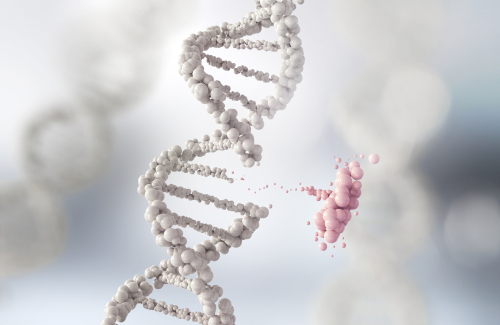Common Mutations of CMT4 Subtypes Not Found in Iranian Patients, Study Reports

Two genetic mutations that cause subtypes of Charcot-Marie-Tooth (CMT) disease are not common in Iranian CMT type 4 patients, despite their high prevalence in other similar populations with consanguineous marriage, a study has found.
One new mutation was identified in 21 patients, but more research is required to determine its importance in disease progression, researchers say.
The study, “Investigation of Mutations in Exon 14 of SH3TC2 Gene and Exon 7 of NDRG1 Gene in Iranian Charcot-Marie-Tooth Disease Type 4 (CMT4D) Patients,” was published in the Iranian Journal of Child Neurology.
CMT is a group of inherited disorders of the peripheral nervous system — nerves outside the brain and spinal cord — that transmit messages about movement and sensation between the limbs and the brain.
CMT type 4 (CMT4) is a rare type caused by damage to the fatty protective coating that covers nerve fibers called the myelin sheath. The seven subtypes of CMT4 are each caused by different genetic mutations and with distinct characteristic symptoms.
Subtypes CMT4C and CMT4D are inherited in an autosomal recessive manner, meaning both copies of a gene, one from each parent, have mutations causing the disease. They are the most prevalent subtypes in Mediterranean countries, mainly due to a high rate of consanguineous marriage (marriage involving two family members who are second cousins or closer) in these regions.
CMT4C is caused by mutations in the SH3TC2 gene and is characterized by early-onset severe deformities of the spine, whereas mutations in the NDRG1 gene cause CMT4D, whose symptoms include weakness, muscle wasting, and sensory loss.
Recent studies have suggested that SH3TC2 mutations are contributing factors in CMT4D as well.
Researchers based at the Department of National Institute of Genetic Engineering and Biotechnology in Iran designed a study to determine the frequency of two specific CMT4 mutations, one in the SH3TC2 gene (R1109X) and one in the NDRG1 gene (R148X), in a group of 24 CMT4D patients. Some regions in Iran also have a high rate of consanguineous marriage, and researchers thought that these mutations could be playing a role in the development of the disease in Iranian patients.
A total of 14 males and 10 females were selected, with a mean average age of 8.7 years. All showed early-onset disease symptoms and were referred to a medical center for a CMT4D diagnosis.
Blood samples were collected from each patient, genomic DNA was extracted, and target regions around both genes were amplified for analysis.
DNA analysis revealed that the R1109X mutation in the SH3TC2 gene was not present in this group of patients. Further sequence analysis of this gene found a single mutation (c.3327+70C>T) in 21 of the 24 patients, including 14 patients with one gene copy mutated and seven patients with both gene copies (one from each parent) mutated.
This specific mutation was also found in a study in people from Turkey and “may be one of the genetic characteristics of the studied population; such findings can be useful for a better understanding of the genomic features of Iranian population,” the scientists said.
Likewise, the R148X mutation of the NDRG1 gene was also not present in these patients, and no additional mutations were identified by further sequence analysis.
“Overall, our findings contribute to the available genetic data regarding CMT4D in the Iranian population,” the researchers wrote. “Further genetic analysis can provide a better diagnostic approach for this disease through identification of rare or common genetic features in each specific population.”






